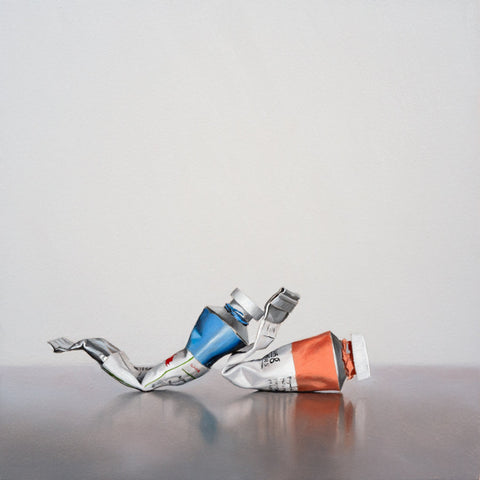What is negative space in art? This term refers to the space around and between the subject of the artwork, for example, the background in a portrait. What is positive space in art? This, on the other hand, refers to the subject matter of the piece, for instance, a person’s face in a portrait. Both are important since they build the overall composition of an artistic work. Do you want to learn more? Then read on!
What Is Negative Space in Art?
Let’s start with the definition of negative space in art. This is the space in an art piece that is necessary yet not seen – the area between the subject matter of the piece. While it is created not to attract attention, it plays a crucial role in an art composition, as it sets the boundaries between what the viewers should and should not focus on, hence creating balance.
There is no clear rule on how much of an art piece should be covered in negative space. You can find works that are dominated by it or ones where such space is scarce. The choice depends purely on the composition that you wish to achieve in your art.
What Is Positive Space in Art?
Having defined what negative space is, let’s proceed to the positive space. In simple terms, it’s the scope of the artwork – the space that contains the most important objects and elements.
While in traditional art, it’s easy to define positive space – it will be a face in a portrait, an object in still life, or a landscape, you can also find it in more abstract works. This is because certain shapes, colors, or even patterns might become positive spaces in the course of creating such an art piece.
The Role of Positive and Negative Space in Art
What purpose does positive and negative space serve in art? They are a part of proportion in art – in this case, the relationship between the areas the artist wants the viewer to focus on and avoid. This way, they create the overall composition and embrace the purpose of the whole piece.
Interestingly enough, there are works in which positive and negative spaces can exchange places. Take, for instance, the pictures used in psychological evaluations – depending on your perspective, you can see either one object or another, and it all depends on…what you perceive as negative and positive space. This proves how crucial these two are for any art piece, as they can completely reshape the way through which you perceive a work of art.
The Three Types of Positive and Negative Space Compositions in Art
Positive and negative spaces work together in art, creating different effects based on the proportions between them. Therefore, we can use them to distinguish three types of compositions: positive-space-dominated, balanced, and negative space-dominated. Let’s explore them now.
Mostly Positive Space
The composition where positive space dominates is usually created for one of 3 purposes:
- To show off chaos.
- To portray a busy scene.
- To create a highly detailed image.
This can be achieved either by creating a singular, large object designed to draw attention, or multiple smaller ones that are highlighted through the use of color, blurring the remaining negative space, and so on.

He Blue Me Away - 8” x 8” oil on panel - Robert Lange
Balanced Composition
A balanced composition in art uses both positive and negative space to a similar extent. Typically, you can associate it with symmetrical artworks, though we must underline here that you don’t need symmetry to create such a balance – it can also be done, for example, through proportions.
Mostly Negative Space
What is mostly negative space composition typically associated with? Loneliness and solitude. Such an approach is typically utilized to focus on the internal state of the subject matter, highlighted by the emptiness around it. However, it’s not the only reason why you might want to incorporate a negative-space-dominated composition.
It is also possible to use a lot of negative space to show off the proportions between the objects in the artwork and picture the scale.
The Takeaway
Negative space and positive space work together, directing the viewer towards the most important elements within an artwork and evoking certain emotions. Hence, you don’t only need to understand these concepts but also master them. This will help you create truly gripping art pieces, ones that are evocative, dynamic (or static), and appealing to the viewer. Therefore, we recommend that you experiment with negative and positive spaces and analyze some famous works with a focus on these concepts – this might be a great aid on your way to finding your own art style.
Did you like this article? Then you should also read: What Is Form in Art?
